Health
Silent Killers Hit Nigeria’s Big Cities
Published
5 months agoon
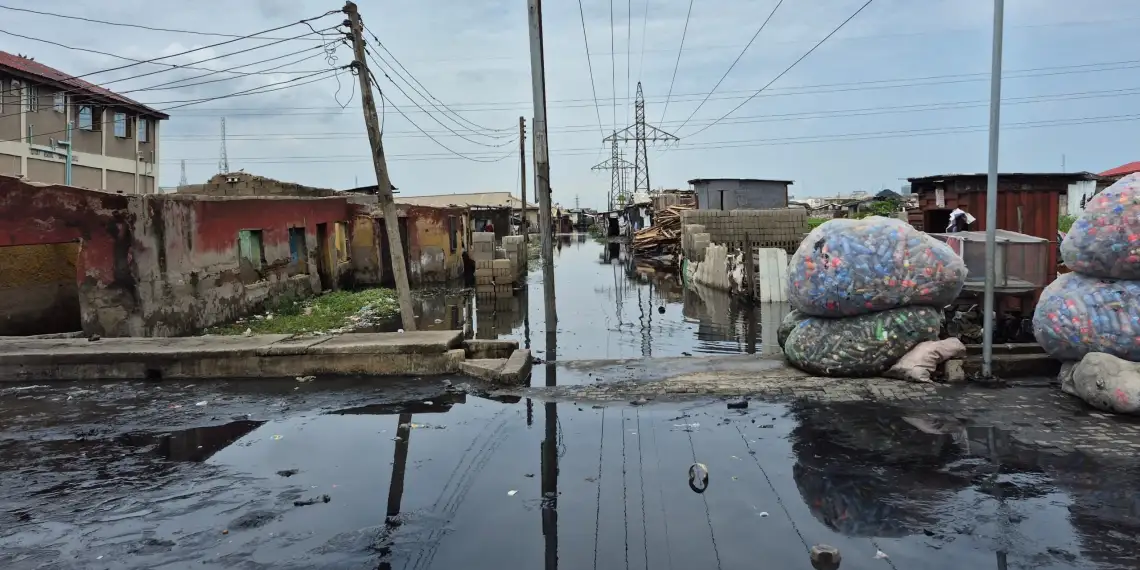
When 50-year-old Lawan Umar set out with his six-year-old daughter, Zulaihat, he thought he was dealing with a routine fever—something a hospital visit could easily fix. He never imagined that trip would end in tragedy.
Even more unimaginable was what followed. Within just five days, he found himself burying not only Zulaihat but also her siblings—nine-year-old Khadija and 12-year-old Umar. All three children lost their lives to diphtheria in October 2023, during Nigeria’s still-unfolding outbreak that began the year before.
“They were waving goodbye as I left with Zulaihat,” Mr. Umar said, his voice heavy with grief. “They were smiling. They seemed perfectly fine.”
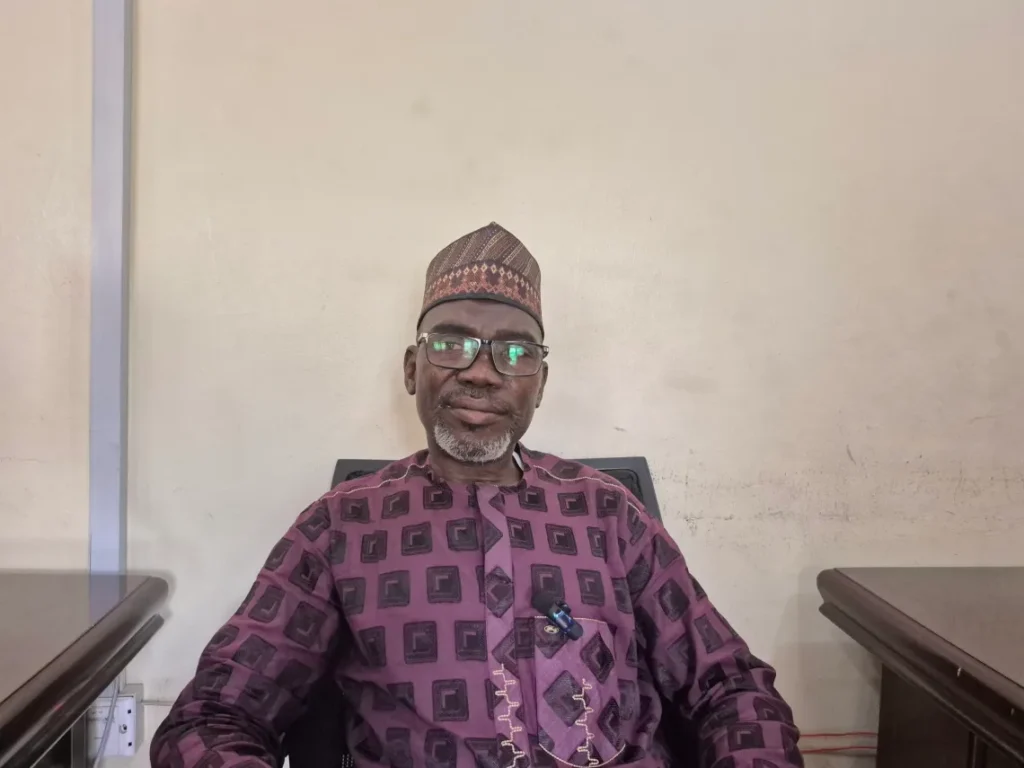
What seemed like a simple fever quickly spiraled into a devastating ordeal. Zulaihat was first taken to a nearby clinic, then referred to the Infectious Diseases Hospital in Kano. From there, she was transferred to Murtala Muhammad Hospital—where she tragically passed away that same day.
Following Zulaihat’s burial, Mr. Umar sensed something wasn’t right—Khadija and Umar, usually lively, had grown unusually quiet. Though they showed no obvious signs of illness, he decided to take them to the hospital just to be safe.
“They were still smiling,” he recalled. “They looked okay.” But doctors quickly placed both children in isolation. Khadija passed away just two days after Zulaihat. Umar followed two days later.
The Umar family resides in Gaidar Fulani, within the Kumbotso Local Government Area of Kano State. At the time of their heartbreaking loss, Mr. Umar and his wife were raising five children. After the deaths of three, they have since welcomed a new baby into their home.
Tragically, Mr. Umar’s experience is far from isolated. In Kano, diphtheria has taken a heavy toll, claiming hundreds of lives and leaving countless families in mourning.
And the heartbreak extends beyond the North. In Lagos, Nigeria’s bustling commercial hub, a similar tragedy struck in June 2024 during the height of the city’s cholera outbreak. Caleb Ezechimere, a young medical lab scientist, died just one month into his internship at the Military Hospital. His death was traced to a contaminated tiger nut drink he bought from a street vendor.

“Everyone who bought from that same vendor landed in the hospital,” said Jaachi Nwagbara, a medical doctor and sister-in-law to Caleb Ezechimere. “But he didn’t survive.”
“It was a death that never should have happened — and that’s what hurts the most. It was entirely preventable.”
Yet across Nigeria’s largest cities — Kano and Lagos — cases like Caleb’s and the Umar children’s are becoming all too common. Outbreaks of preventable diseases like diphtheria and cholera continue to expose deep-rooted gaps in public health systems: inadequate disease surveillance, low vaccination coverage, and weak emergency response infrastructure.
Visits to the most affected neighborhoods — from Kano’s hardest-hit communities to Lagos’ overcrowded informal settlements — show just how dangerously unprepared many areas remain.
A Crisis Years in the Making
Since 2022, Nigeria has been grappling with its most severe diphtheria outbreak in decades. According to the Nigeria Centre for Disease Control and Prevention (NCDC), more than 43,000 suspected cases have been recorded across 360 Local Government Areas in all 36 states and the Federal Capital Territory.
What unfolded in Mr. Umar’s household is a window into the broader crisis unfolding in Kano, the epicenter of the outbreak. The state alone has reported 24,415 suspected cases, with 18,284 confirmed infections and 860 deaths.
Other severely impacted states include Bauchi (2,334 confirmed cases), Yobe (2,411), Katsina (1,610), Borno (1,166), Plateau (119), and Jigawa (53), painting a grim picture of a health emergency that has spiraled far beyond its point of origin.
Across the country, a total of 26,499 diphtheria cases have been confirmed. Alarmingly, around 64 percent of those affected were children between the ages of one and 14. Of these, only 4,999 — just 19.1 percent — had received the full dose of the diphtheria toxoid-containing vaccine. In other words, more than 80 percent of confirmed cases involved children who were either partially vaccinated or had never been vaccinated at all.
Kumbotso, where Mr. Lawan resides, was one of the eight worst-hit local government areas in Kano during the 2023 wave of the diphtheria outbreak. Other severely impacted LGAs included Ungogo, Dala, Fagge, Gwale, Nassarawa, Kano Municipal, and Tarauni.
Within these communities, families recounted heartbreaking stories of loss and narrow escapes—testimonies that underscore how exposed they remain to future epidemics if systemic gaps aren’t addressed.
Health Gaps and the Vaccination Deficit
In neighborhoods such as Rimin Kebe, Gama B, and Rangaza, residents pointed to major obstacles: distant health centers, unreliable access to routine immunizations, and poor sanitation infrastructure. These challenges make it incredibly difficult to contain outbreaks, particularly among vulnerable children.
Rimin Kebe, located in Ungogo LGA, emerged as one of the state’s major diphtheria hotspots. Ibrahim Haruna, a 75-year-old resident who’s lived there for over 30 years, said disease awareness in the area often comes too late—when infections have already taken root.
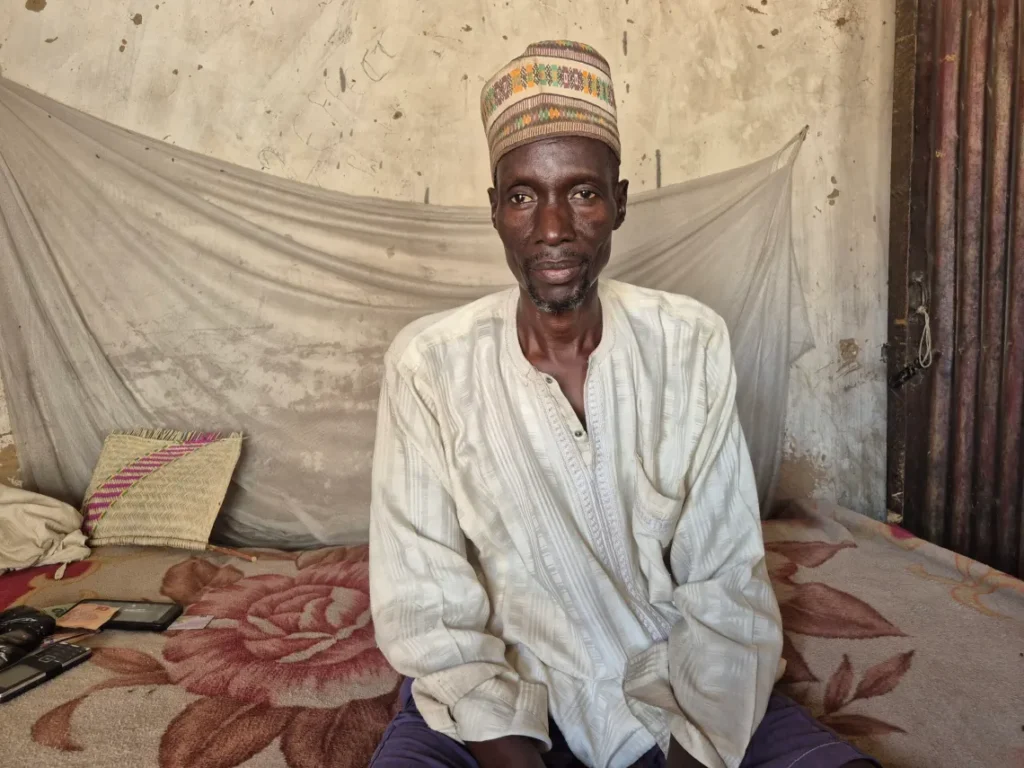
“It’s not just the illness—it’s the delay in getting medical help,” said Mr. Haruna, recalling a recent tragedy. His wife went into labour late at night, and with no nearby clinic available, they had to transport her on a motorcycle. By the time they reached the hospital, it was too late. Their baby had died and had to be removed surgically.
Access to vaccines remains a major concern across these communities. In Rangaza, also within Ungogo LGA, a Community Health Extension Worker (CHEW) who asked not to be named shared how health teams are often reluctant to enter the area—even during outbreaks.
“We have to depend on the general hospital, which is quite far,” she explained. “There are times I’ve had to plead with officials just to get children vaccinated.”
She added that a recent diphtheria outbreak among children in the community was worsened by overcrowding, blocked drains, and poor sanitation.
Anas Ibrahim, a pharmacist operating a small drugstore in Ungogo, echoed similar concerns. He noted that poor road access to informal settlements deters public health teams from running outreach programmes like vaccination drives.
“People usually treat themselves with over-the-counter drugs,” he said. “Sadly, we’ve lost patients who couldn’t survive the trip to the nearest hospital.”
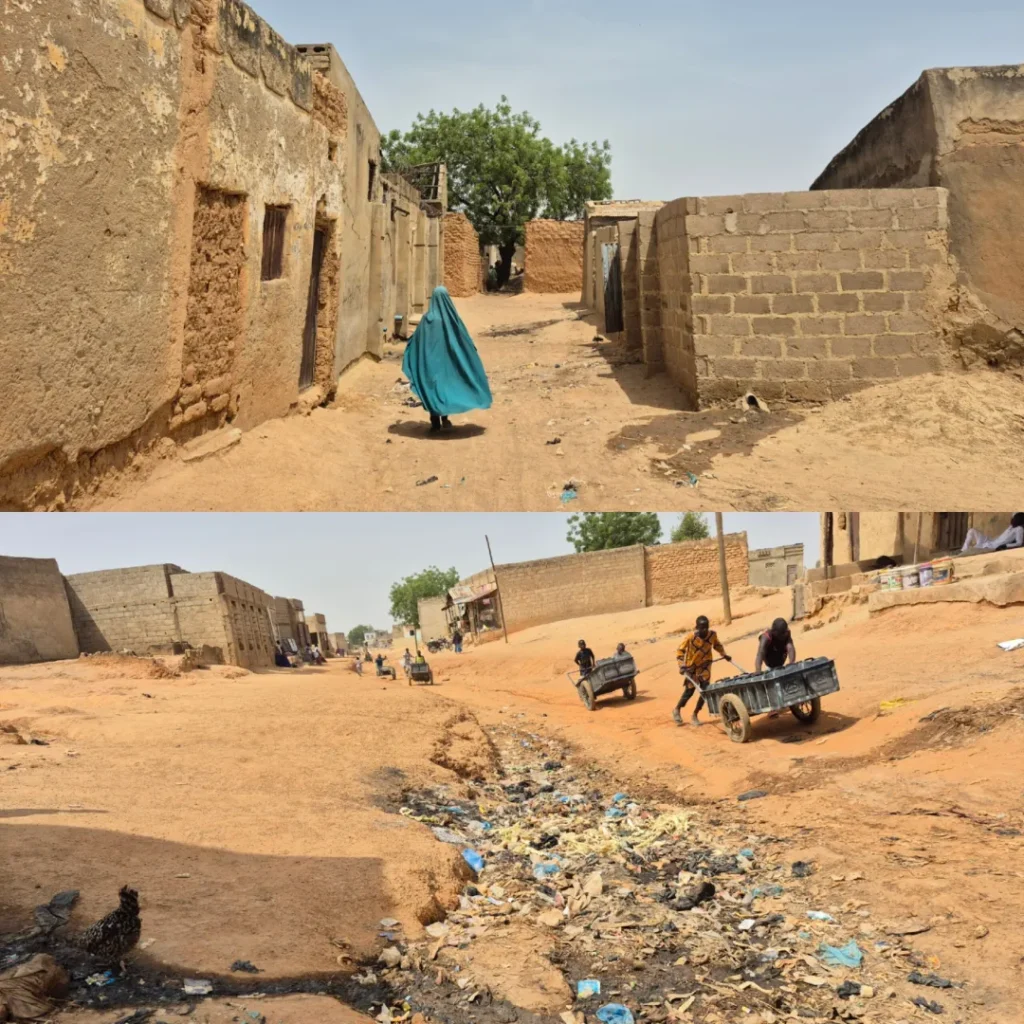
Bolstering Disease Surveillance in Kano
Although Kano remains at the heart of Nigeria’s diphtheria crisis—with more than 18,000 confirmed cases and hundreds of fatalities since 2022—state officials maintain that efforts to contain the outbreak are ongoing.
In response to PREMIUM TIMES’ inquiries, the Kano State Ministry of Health acknowledged the state’s status as the epicentre of the outbreak. However, ministry spokesperson Ahmad Abubakar emphasized that it would be misleading to claim the government has been idle.
He explained that the state has been “actively engaged in targeted vaccination drives, public awareness campaigns, and partnerships with health organizations,” all aimed at curbing the spread of diphtheria, particularly in vulnerable communities.
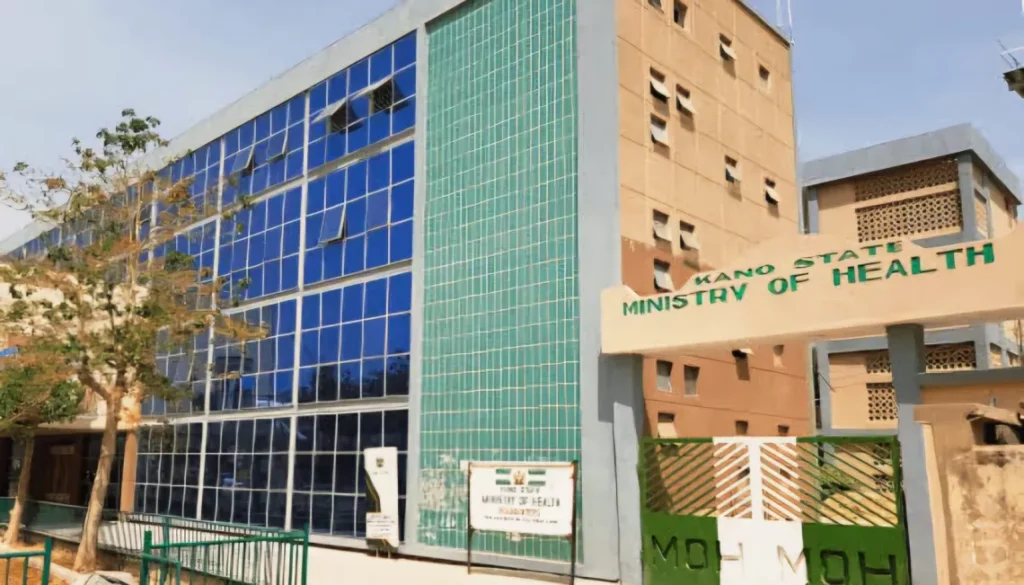
Addressing Low Immunisation Rates and Strengthening Public Health Responses
Commenting on the issue of inadequate vaccine coverage, Ahmad Abubakar, spokesperson for the Kano State Ministry of Health, said the government had ramped up outreach initiatives, collaborated with community influencers, and expanded access to routine immunisation in densely populated areas.
He added that steps were being taken to reinforce the state’s disease surveillance systems. “We’ve trained surveillance officers and mobilised community informants to help identify and report suspected diphtheria cases promptly,” he noted.
Diphtheria: A Preventable Yet Deadly Threat
Diphtheria is a highly contagious bacterial infection caused by Corynebacterium diphtheriae. It primarily targets the respiratory tract and, in severe cases, can obstruct airways or spread to the heart and nervous system, often with fatal consequences.
Despite its dangers, diphtheria is entirely preventable with a vaccine administered during early childhood as part of the pentavalent immunisation schedule. Yet, immunisation gaps persist. As of September 2023, the Nigeria Centre for Disease Control and Prevention (NCDC) reported that over 80% of confirmed cases in the ongoing outbreak were among children who had not completed their vaccination series.
Vaccine Hesitancy and the Ongoing Crisis
A 2024 study titled “Vaccine Hesitancy Under the Lens: Nigeria’s Struggle Against the Worst Diphtheria Outbreak in Decades” underscored the role of vaccine resistance in amplifying the crisis. In Kano—where the outbreak has hit hardest—only 14% of the target group of children under five received the recommended pentavalent vaccine during critical immunisation campaigns.
The report cited cultural mistrust, misinformation, and weak healthcare communication as key drivers of hesitancy. It argued that combatting vaccine apathy is not just about stopping the current outbreak—it’s a foundational step toward preventing future epidemics.
Rethinking Outreach: Community-Based Solutions
Experts say solving Nigeria’s immunisation challenge requires more than episodic vaccine drives. Christiana Fashola, a global expert in digital health and immunisation systems, told PREMIUM TIMES that sustainable progress lies in grassroots strategies.
ALSO READ : Hearing Restored: One Shot Reverses Deafness in Weeks
“One of the most effective interventions is incorporating community pharmacies into the vaccine delivery ecosystem,” Ms Fashola said. “Pharmacists are often more accessible than traditional clinics in underserved areas, and they can reach not just infants, but also teenagers and adults.”
She also stressed the importance of culturally tailored messaging and involving respected local voices to overcome mistrust and misinformation.
Lagos: A City Still at Risk
Despite being Nigeria’s most economically advanced state, Lagos faces significant public health risks—especially in its urban slums. In areas like Ajegunle, Makoko, Bariga, and Badia East, residents contend with poor sanitation, open drains, and overcrowded housing, all of which make them vulnerable to outbreaks.
During the rainy season, these risks intensify. Flooding contaminates water sources, overburdened drainage systems collapse, and preventable illnesses like cholera spread rapidly—reminding us that even in megacities, disease knows no postcode.
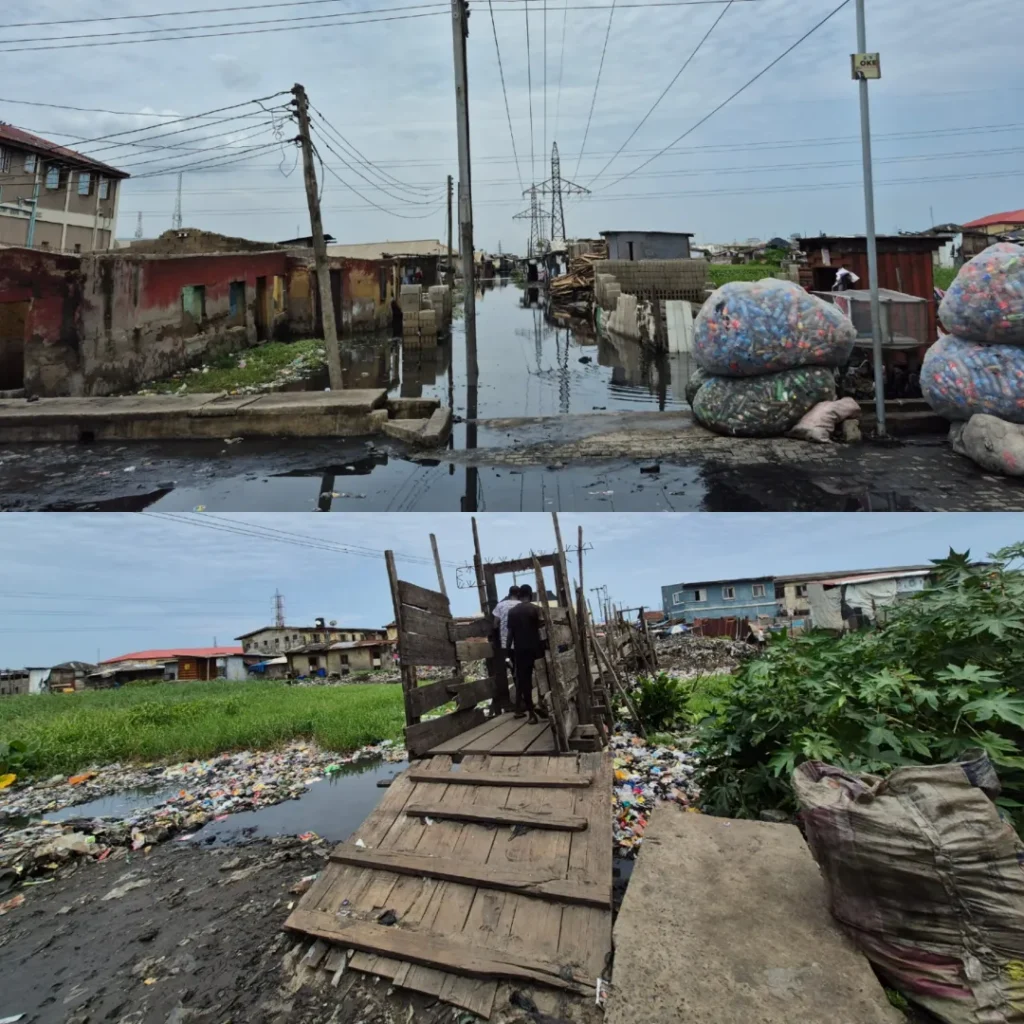
Life on the Edge: Health and Hope in Lagos’ Underserved Communities
In the heart of Ajegunle’s Ifelodun LCDA, community leader Liadi Eniola points to rows of homes perched beside a narrow wooden footbridge, flanked by stagnant, refuse-filled water. Despite the harsh environment, families cook, sleep, and raise children there.
“Maybe we’ve built some kind of resistance,” Mr. Eniola says wryly. “Otherwise, many of us would be long gone.” Yet, when outbreaks hit, illness still finds them.
Residents in Bariga and Makoko echo the same frustration. In Araromi, Bariga, 39-year-old Hunkarin Felix says people are left scrambling for care when illness strikes. “We move from place to place, looking for help,” he says. “Sometimes, by the time we find a clinic, it’s already too late.”
In Makoko—a densely packed, water-locked settlement—access to healthcare is even more difficult. Emmanuel Enasumahousiele, a former local government works supervisor, lost his wife to a suspected malaria episode on 17 June.
“She died because we couldn’t get help in time,” he said. “If Makoko had a functional hospital, she’d still be here.”
Others like Jejelola Shittu and Jacqueline Afan, both 30, have watched loved ones die from treatable conditions—victims not just of disease, but of deep neglect.
Beyond health, the fear of displacement looms. Residents of Bariga and Makoko told PREMIUM TIMES they’re under constant pressure to evacuate their communities for impending demolition.
“We’re not asking for miracles,” Mr. Enasumahousiele said. “We just want basic healthcare, clean water, and a chance to survive. If they clear us out, where do we go?”
A Perfect Storm for Disease
Lagos’ informal settlements remain hotspots for infectious disease outbreaks like cholera, worsened by flooding, poor drainage, and a chronic lack of sanitation. These conditions, experts warn, could turn a single infection into a public health crisis.
Dr. Adedayo Aderibigbe, a consultant in community medicine at Lagos State University Teaching Hospital (LASUTH), says the combination of poverty and overcrowding creates the perfect storm.
“These areas face multiple threats—unsafe water, poor hygiene, inadequate nutrition, and substandard housing,” he told PREMIUM TIMES. “When you add flooding and waste contamination during the rainy season, the risk of disease skyrockets—especially among children.”
Cholera Resurgence and Uncertain Data
According to the Nigeria Centre for Disease Control and Prevention (NCDC), Lagos reported the highest number of suspected cholera cases in the country in 2024—accounting for 43% of the national caseload. Lagos Island alone represented 5% of all suspected cases across Nigeria.
As of 29 September 2024, NCDC’s official records showed 10,837 suspected cholera cases and 359 deaths. Just two weeks later, the agency confirmed the figures had jumped to 14,237 cases and 378 deaths across 35 states and the FCT.
By 2 March 2025, the country had already recorded 1,149 suspected cholera cases and 28 deaths for the new year, with a 2.4% case fatality rate. While Lagos showed only three new suspected cases, Bayelsa and Rivers States had overtaken it in infection rates.
Still, the fluctuating data underscores a more concerning issue—significant gaps in surveillance and reporting. For communities like Ajegunle, Makoko, and Bariga, these numbers often mask the human toll of weak healthcare systems, environmental neglect, and policy inaction.
Until those gaps are addressed—and the residents of Lagos’ poorest communities are given access to clean water, consistent care, and dignified living—the risk of another outbreak remains dangerously high.
Global Warnings Echo Local Realities
In June, the World Health Organization (WHO) raised a red flag over persistent data gaps in Nigeria’s cholera surveillance system—gaps that obscure the true scale of the ongoing crisis.
According to the WHO, Nigeria recorded 1,562 cholera cases between 1 January and 25 May 2025. The country contributed to the 117,346 cases reported across 17 countries in the WHO African Region during that period.
But the agency warned that these numbers may only scratch the surface.
“The data should be interpreted with caution due to possible underreporting, delays in submission, and limited diagnostic capacity,” the WHO said. “The figures might not accurately represent the true burden of cholera.”
This warning reflects what residents of Makoko, Ajegunle, and Badia East in Lagos have long experienced: that many cholera cases—and even deaths—go unreported. In these overcrowded and underserved communities, illnesses are often managed at home, in local pharmacies, or not at all, with no official record of what happened.
As the world tracks the outbreak through formal channels, the true human cost may be unfolding silently, far from the data sheets—one uncounted life at a time.
Lagos Scales Up Cholera Response
Responding to PREMIUM TIMES’ inquiries, the Lagos State Government outlined several measures it has taken to strengthen its cholera response.
According to the Special Adviser to the Governor on Health, Kemi Ogunyemi, the state has intensified disease surveillance and enhanced its reporting systems. Surveillance officers across all local government areas, she noted, have received updated training, including the use of the Surveillance Outbreak Response Management and Analysis System (SORMAS)—a digital platform that enables real-time tracking of cases.
In collaboration with the World Health Organization (WHO) and the Nigeria Centre for Disease Control and Prevention (NCDC), the state also trained 100 frontline health workers on the use of rapid diagnostic tests for cholera. The trainees include 57 laboratory focal points from primary healthcare centres, 25 from general hospitals, 23 disease surveillance officers, and five personnel from the Lagos State Biobank.
Ogunyemi added that quarterly evaluations are being conducted to further build the capacity of surveillance officers and strengthen data management systems, ensuring more accurate and timely responses to outbreaks.
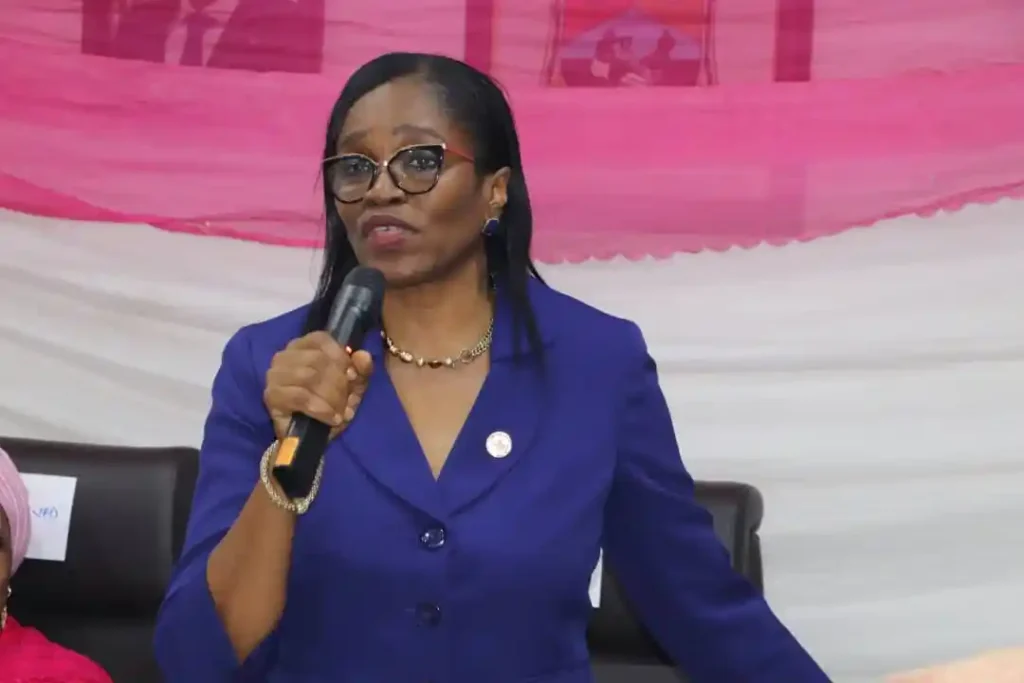
Gaps Remain Despite Improvements
Ogunyemi also noted that the state’s health ministry is collaborating with environmental health officers and ramping up community sensitisation efforts in high-risk areas.
While these interventions are encouraging, experts say their success will ultimately hinge on how efficiently data is gathered from the hardest-hit communities—such as those profiled in this report.
Dr. Adedayo Aderibigbe, a consultant community health physician, acknowledged that Lagos has made significant strides in disease surveillance compared to many other states. However, key challenges remain.
He cited issues such as inconsistent funding, overdependence on external partners, and logistical setbacks. In some parts of the state, surveillance and case tracking are still conducted manually, which slows down response efforts.
“Digital tools and technology are critical to effective surveillance,” he said. “It’s far more cost-effective to detect and fix weaknesses in the public health system early than to manage the fallout of full-blown outbreaks.”
He urged the Lagos State Government to deepen investments in early detection infrastructure, expand the use of electronic reporting tools, and strengthen public health awareness—particularly among frontline health workers—about the role of disease surveillance.
You Might Also Like These
 Coronavirus: Nigeria records 386 new cases of COVID-19, total rises to 3912
Coronavirus: Nigeria records 386 new cases of COVID-19, total rises to 3912
 NCDC confirms 38 new coronavirus cases in Nigeria, 23 in Kano
NCDC confirms 38 new coronavirus cases in Nigeria, 23 in Kano
 Coronavirus: Nigeria records 3 new deaths, first triple figure
Coronavirus: Nigeria records 3 new deaths, first triple figure
 Covid-19: 381 New confirmed cases, Lagos records 183 In one day
Covid-19: 381 New confirmed cases, Lagos records 183 In one day
 Lagos Govt confirms 95 new cases of coronavirus
Lagos Govt confirms 95 new cases of coronavirus
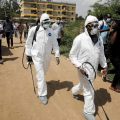 Lagos govt announces death of 3 coronavirus patients
Lagos govt announces death of 3 coronavirus patients
 BREAKING: 114 new confirmed COVID-19 cases as Nigeria hit 1095, New 80 Cases in Lagos
BREAKING: 114 new confirmed COVID-19 cases as Nigeria hit 1095, New 80 Cases in Lagos
 Ebola: Health Minister Says Doctors’ Strike Puts Nigeria At Disadvantage
Ebola: Health Minister Says Doctors’ Strike Puts Nigeria At Disadvantage
 COVID-19: Health Minister reveals what he discussed with Buhari on Saturday
COVID-19: Health Minister reveals what he discussed with Buhari on Saturday
 BREAKING: NCDC confirms 51 fresh Coronavirus cases as toll hits 493
BREAKING: NCDC confirms 51 fresh Coronavirus cases as toll hits 493
 BREAKING: COVID-19: Confirmed cases of coronavirus hit 210 in Nigeria
BREAKING: COVID-19: Confirmed cases of coronavirus hit 210 in Nigeria
 BREAKING: Nigeria’s coronavirus cases reach 981, Fatalities 31
BREAKING: Nigeria’s coronavirus cases reach 981, Fatalities 31

